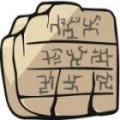
Worksheets and No Prep Teaching Resources
Reading Comprehension Worksheets
History of Books and Writing

History of Books and Writing
 Worksheets and No Prep Teaching Resources Reading Comprehension Worksheets History of Books and Writing |
 History of Books and Writing |
| edHelper's suggested reading level: | grades 9 to 12 | |
| Flesch-Kincaid grade level: | 10.73 |
|
All the News That's Fit to Print - and Some That Isn't
By Colleen Messina |

|
 1 One popular newspaper, The New York Times, has the slogan "All the news that's fit to print," but some early news pamphlets definitely didn't follow that motto. They relied on sensational tales to entice people to read their pamphlets. An early German news pamphlet had stories about a bizarre Transylvanian maniac named Vlad Dracula. It documented his bizarre, scary life. The character was later known as Count Dracula!
1 One popular newspaper, The New York Times, has the slogan "All the news that's fit to print," but some early news pamphlets definitely didn't follow that motto. They relied on sensational tales to entice people to read their pamphlets. An early German news pamphlet had stories about a bizarre Transylvanian maniac named Vlad Dracula. It documented his bizarre, scary life. The character was later known as Count Dracula! |
Create Weekly Reading Books
Prepare for an entire week at once! |
| Leave your feedback on All the News That's Fit to Print - and Some That Isn't (use this link if you found an error in the story) |
 |
History of Books and Writing
|
 |
High School Reading Comprehensions and High School Reading Lessons
|
 |
Social Studies
|